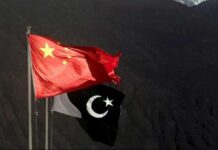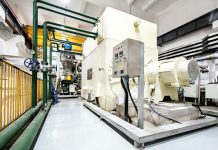BEIJING: When she finally arrived at her destination after days and nights of taxing travel, she was welcomed by a starlit sky that was unlike anything she’d ever seen. “The sky was like a big pot lid, and the stars covered me like a quilt,” Li recalled.
But her initial excitement was soon replaced by a sense of anxiousness in the face of an unknown future. She had come to Dunhuang to visit the Mogao Grottoes, a UNESCO World Heritage Site located about 25 km from the city at the edge of the Gobi Desert.
Comprising numerous caves featuring countless sculptures, murals and manuscripts, the grottoes, or Mogao Caves (also known as the Caves of the Thousand Buddhas and the Dunhuang Caves), were constructed over a period of 1,000 years, from the 4th to the 14th century and to this day are the greatest treasure trove of Buddhist art found in a single locality anywhere in the world.
One year earlier, Li had read an article about Japanese painter and educator Ikuo Hirayama’s visit to these caves, who suggested certain features of Nihonga, or traditional Japanese painting, could help reproduce prints of the illustrious Mogao murals.
The article inspired Li, who decided to write to Duan Wenjie, then director of the Dunhuang Academy, saying she could do something similar by reproducing the murals using photocollography, also known as collotype, a reproductive printmaking technique that is based on photography.
Six months after she’d mailed the letter, Duan finally wrote back, saying: “Welcome to Dunhuang, you have my support.” And so, on July 30, 1984, Li met the Mogao murals, a meeting that changed her life for good. “The ancient murals are exquisite. Their beauty will stun anyone who sees them,” she told Beijing Review. “But unfortunately, time does leave its stamp; they fade and peel. So [back then] I just figured: If I can reproduce them through photocollography, it will be an asset for future generations.”
In the early 1970s, responding to then Premier Zhou Enlai’s proposal to revitalize collotype in China, Li, who was working at the National Cultural Heritage Administration, started learning the printing method at the Palace Museum, or the Forbidden City, in 1974. “It’s almost impossible to fully grasp such a difficult technique,” Li, who had practiced sketching for three years before trying her hand at photocollography, thought at the time.
Invented by French chemist Alphonse Poitevin in 1856, the technique was especially popular in the early 20th century for its effectiveness in reproducing the subtle delicacy of drawings and photographs. A photographic negative is projected onto a printing plate coated with light-sensitive gelatin that hardens and becomes receptive to the application of ink. Paper is laid on top and the image is printed with a press. The technique entered China in the late 19th century. Including four steps—photographing, retouching, plate making and printing—it requires an accurate analysis of the original colors and expert retouching skills to correct any distortions in the negatives.
–The Daily Mail-Beijing review news exchange item





